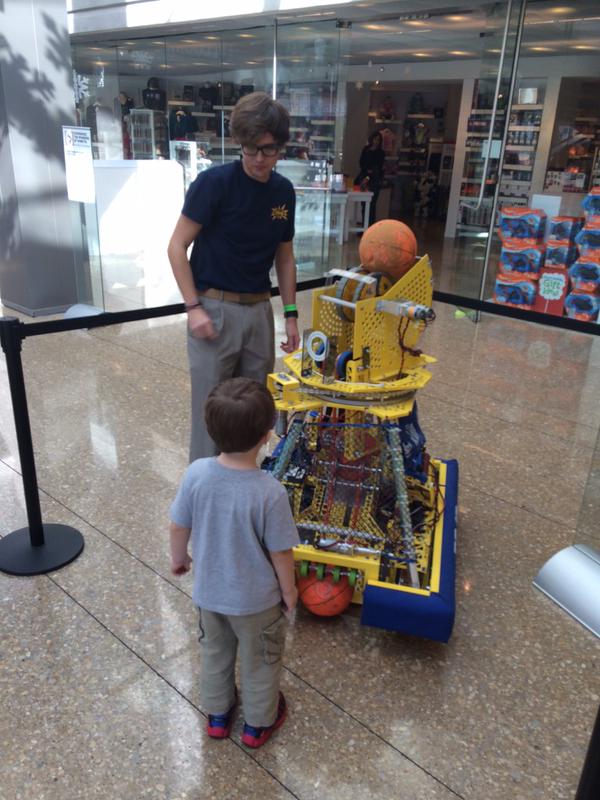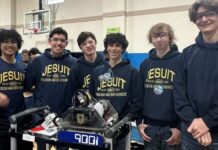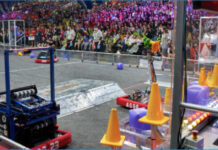3…2…1…Go!
This countdown, followed by the screams of thousands of fans inside the Edward Jones Dome in Saint Lewis, Missouri, ended with Dallas Jesuit’s very own robotics team bringing home the gold medal in the winter of 2014, winners of 2014 FIRST (For Inspiration and Recognition of Science and Technology) National Championship.
– Video of Jesuit winning FIRST Championship competition
As former world champions, Dallas Jesuit’s 2848 Robotics team has received countless recognition for their success, most notably throughout the Dallas-Fort Worth Metroplex. One example of such high accolades occurred two weekends ago, on Saturday December 6, 2014, when Jesuit’s robotics team was invited to give a demonstration of their world champion robot at the Perot Museum in downtown Dallas.
According to fellow robotics team member Junior John Sauer, “We gave an exhibition and demo of our robots that have competed in the FIRST Robotics Competition. We also allowed people to drive the robot that won the world championship, where they would move, pick a ball, get the robot into position and shoot.” Jesuit provided an opportunity for kids and adults alike to enjoy the robots through the hands-on experience.
Although the Jesuit Robotics team was not asked to give any formal oral presentations regarding the robots, both students and Jesuit faculty members willingly talked to young children and adults.
Amazingly, this is not the only means through which Jesuit Robotics has been recognized after winning a national championship. More specifically, Jesuit robotics has received funding for new equipment to help them reach the next level of advanced design, such as 3D printers and a laser cutter for part fabrications, perks of being world champions. Even more interesting, Jesuit Robotics was asked to present their championship robot at SMU during a Technology Entertainment and Design exposition.
As to the upcoming 2015 season, John explains how, “Starting in early January, we begin the FIRST Robotics Competition. On the first day, called kick-off, we watch an introductory video that gives the challenge for that year. After that, we have six weeks to design, build, and program a robot that completes that challenge. Then, we compete in a couple of regional competitions, usually in Texas, and if we win certain awards, we advance to the world championship. When the FRC season is over, we spend time improving the shop, experimenting with new mechanisms, and preparing for offseason competitions.”
With future challenges on the horizon, the refurnished and newly united team looks forward to the upcoming season with anticipation, and with the team’s experience, resources and passion to excel, next year’s robotics team mantra may very well be “To infinity and beyond!”






